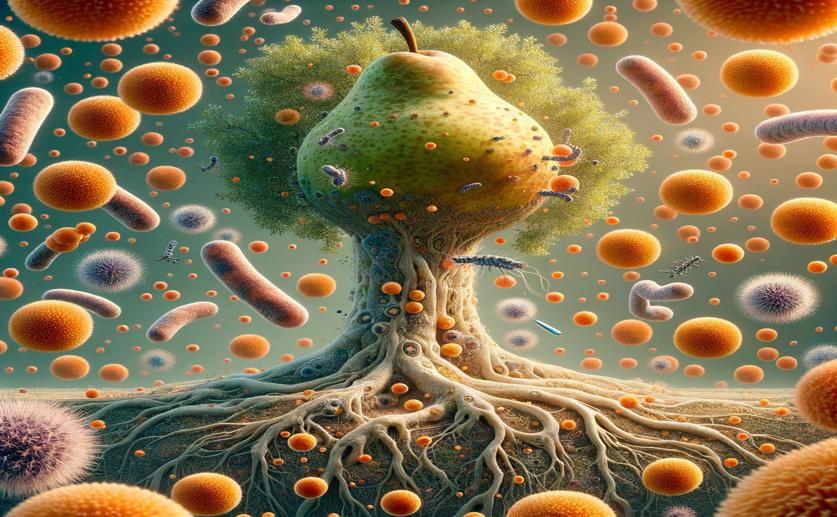
Decoding Pear Tree Bacteria Genes and Phage Disease Defense
Jenn Hoskins
8th March, 2024

Image Source: Natural Science News, 2024
Key Findings
- Study in Berkeley found unique bacterial strains in ornamental pear trees that can infect crops
- A new virus that kills these bacteria was discovered and may protect crops without antibiotics
- The virus effectively reduced disease in pear fruit, showing promise as a biocontrol agent
References
Main Study
1) Genomic characterization of Pseudomonas syringae pv. syringae from Callery pear and the efficiency of associated phages in disease protection.
Published 5th March, 2024
https://doi.org/10.1128/spectrum.02833-23
Related Studies
2) Effector Identification in Plant Pathogens.
3) A lipopolysaccharide-dependent phage infects a pseudomonad phytopathogen and can evolve to evade phage resistance.
4) Drivers and consequences of bacteriophage host range.
5) Biological and Molecular Characterization of the Lytic Bacteriophage SoKa against Pseudomonas syringae pv. syringae, Causal Agent of Citrus Blast and Black Pit in Tunisia.



 27th February, 2024 | Greg Howard
27th February, 2024 | Greg Howard